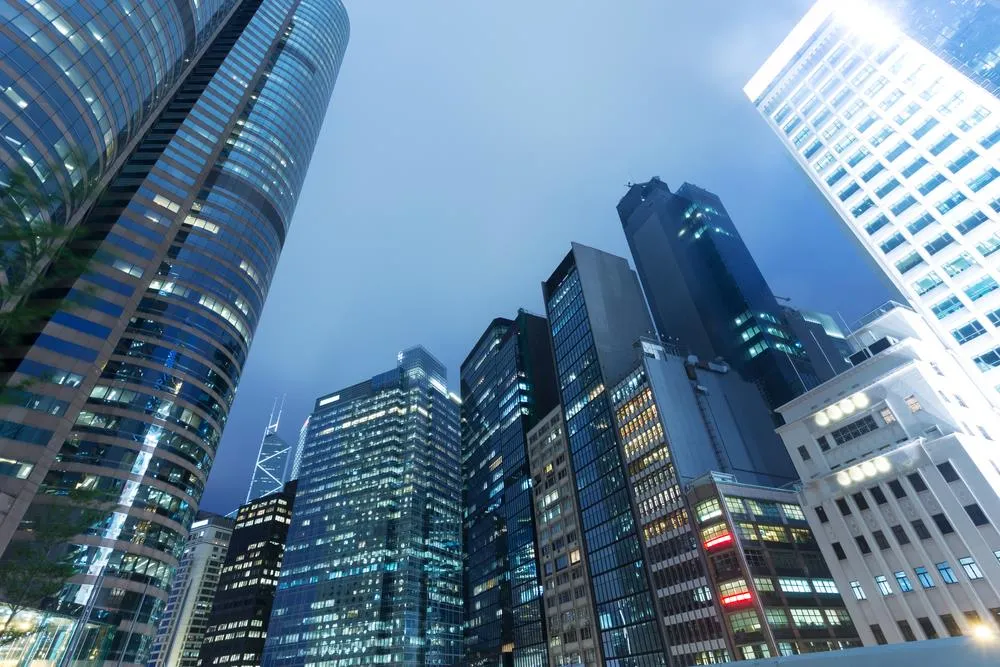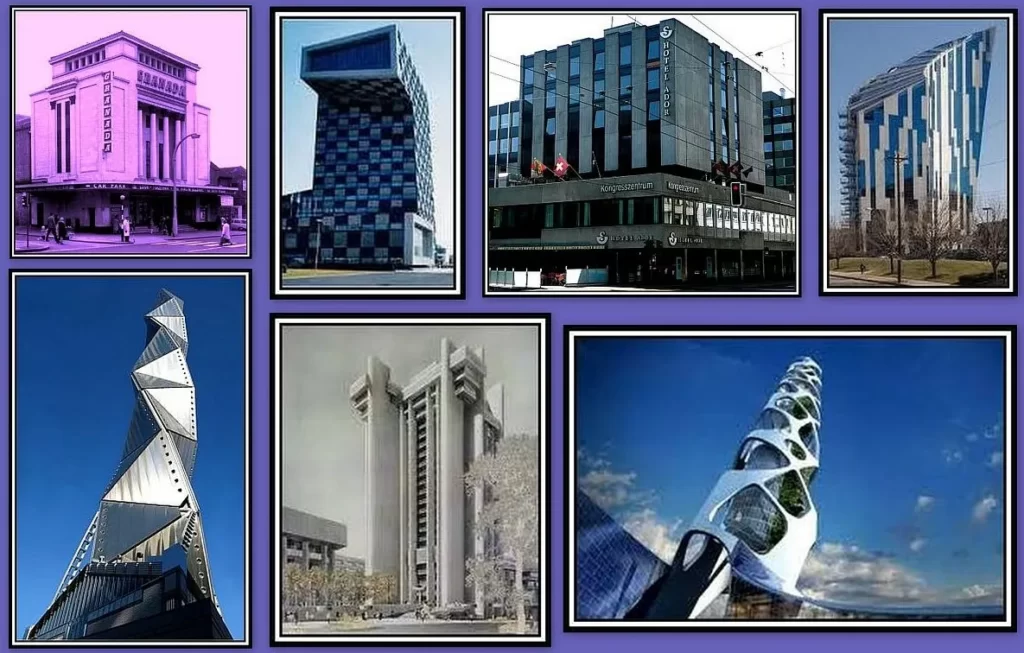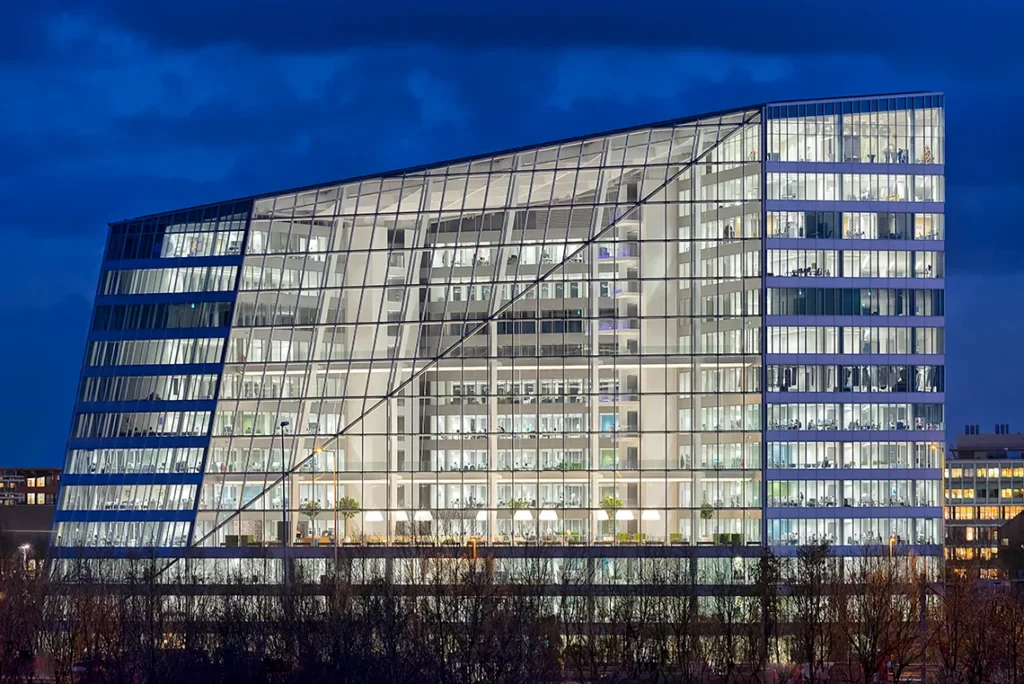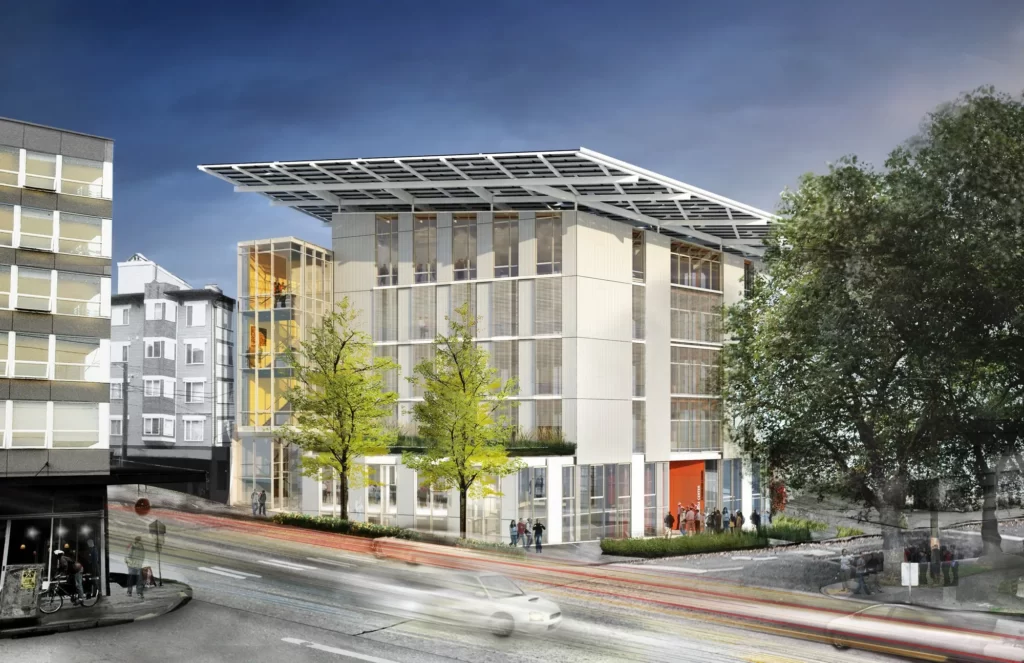If you want to know about the staircase design or landscape garden or requirements for disabled persons in a building, please click the link.
Commercial building design in architecture is the process of creating functional and visually appealing buildings for commercial purposes such as offices, retail spaces, and mixed-use developments. Commercial buildings are important as they serve as the backbone of the economy, providing spaces for businesses to operate and contribute to the growth of cities and communities.

Commercial building design plays a crucial role in shaping our built environment and creating spaces that are functional, sustainable, and aesthetically pleasing. Architects have a responsibility to design buildings that meet the needs of their occupants while also minimizing their impact on the environment.
1) Factors to Consider in Commercial Building Design
When architects design commercial buildings, they take into consideration a variety of factors that can impact the final design of the building.
Some of the key factors include:
- Location: The location of the commercial building is a significant factor that influences the design process. The site of the building may have certain zoning restrictions, building codes, or environmental factors that need to be considered. Additionally, the location may have an impact on the size, shape, and orientation of the building.
- Purpose: The purpose of the commercial building is another key factor that architects consider when designing a building. Different types of commercial buildings, such as offices, retail spaces, and warehouses, require different design considerations to ensure that the building is functional and meets the needs of the occupants.
- Budget: The budget for a commercial building project is also a significant factor that architects must take into consideration. The cost of materials, labor, and other expenses will determine the design choices and overall scope of the project. Architects need to balance the client’s budget with their vision for the building and find ways to optimize the design to stay within the budget.
- Building Codes and Regulations: Architects must comply with building codes and regulations when designing commercial buildings. These codes and regulations cover various aspects of the building, such as safety, accessibility, and energy efficiency.
- Accessibility: Commercial buildings must be accessible to people with disabilities. Architects must design buildings that are easy to navigate and use for people with disabilities.
- Security: Security is an important consideration in commercial building design. Architects must design buildings that are secure and protect the occupants from threats such as theft, vandalism, and terrorism.
- Structural Requirements: Architects must consider the structural requirements of the building, such as load-bearing capacity, seismic resistance, and wind resistance. This ensures that the building is safe and durable, and can withstand natural disasters.
- Mechanical and Electrical Systems: Architects must design mechanical and electrical systems that are efficient and effective, and that meet the needs of the building’s occupants. These systems can include heating, ventilation, air conditioning, lighting, and plumbing.
- Site Characteristics: The characteristics of the site, such as topography, soil conditions, and climate, can influence the design of the building. Architects must consider these factors when designing the building’s foundation, drainage systems, and landscaping.
- User Experience: Architects must consider the user experience when designing commercial buildings. This includes factors such as circulation, comfort, and visual appeal, which can impact the building’s functionality and the well-being of its occupants.
- Future Flexibility: Architects must consider the future flexibility of the building, such as the ability to adapt to changing needs or to accommodate future growth. This can include designing open floor plans, using modular construction methods, or incorporating movable walls.
These factors can influence the design process and the final outcome of the building in a variety of ways. For example, the location of the building may require specific design considerations, such as the need for insulation or materials that can withstand extreme weather conditions.
The purpose of the building will dictate the size, layout, and zoning requirements. The budget may impact the choice of materials and overall design complexity. By taking into account these and other factors, architects can create successful and functional commercial buildings that meet the needs of their clients and the occupants.
2) Different Types of Commercial Buildings
Architects design a wide variety of commercial buildings that serve different purposes and have unique design considerations.

Here are some of the most common types of commercial buildings and the design considerations that are specific to each:
- Office Buildings: Office buildings are designed for a variety of uses, such as corporate headquarters, small business offices, and co-working spaces. Key design considerations for office buildings include optimizing space for productivity, creating a comfortable work environment, and providing adequate amenities such as conference rooms, kitchens, and restrooms.
- Retail Spaces: Retail spaces are designed to showcase products and provide a comfortable shopping experience for customers. Design considerations for retail spaces include creating an inviting and attractive storefront, optimizing product displays, and providing adequate lighting and air conditioning. Additionally, the layout and size of the retail space must be conducive to the type of products being sold.
- Mixed-Use Developments: Mixed-use developments combine multiple types of commercial spaces, such as offices, retail spaces, and residential apartments, within the same building or complex. Design considerations for mixed-use developments include ensuring that each type of space is designed to meet its specific purpose while also creating a cohesive overall design. Mixed-use developments also need to take into account issues such as parking, security, and shared amenities.
- Hospitality Buildings: Hospitality buildings include hotels, resorts, and restaurants. Key design considerations for hospitality buildings include creating a comfortable and welcoming atmosphere for guests, optimizing space for functionality, and providing amenities such as dining areas, lounges, and swimming pools.
- Industrial Buildings: Industrial buildings are designed for manufacturing, warehousing, and other industrial uses. Key design considerations for industrial buildings include creating a functional layout for production, optimizing space for storage and distribution, and providing adequate ventilation, lighting, and other safety features.
In summary, different types of commercial buildings have unique design considerations that architects must take into account. Office buildings need to be designed to optimize productivity, while retail spaces need to be designed to showcase products and create an inviting shopping experience.
Mixed-use developments need to take into account multiple types of spaces, while hospitality and industrial buildings require specific amenities and features. By considering these specific design considerations, architects can create successful and functional commercial buildings that meet the needs of their clients and the occupants.
3) Key Elements of Successful Commercial Building Design
Successful commercial building design requires a combination of factors that ensure that the building is functional, sustainable, and aesthetically appealing. Here are some key elements that are necessary for successful commercial building design:
- Functionality: Functionality refers to how well the building meets the needs of its occupants. A successful commercial building design should optimize the use of space and ensure that it meets the needs of the people using it. For example, office buildings need to be designed to promote productivity, while retail spaces need to be designed to showcase products and provide a comfortable shopping experience.
- Sustainability: Sustainability refers to designing buildings that minimize their impact on the environment. A successful commercial building design should incorporate sustainable materials, energy-efficient systems, and other features that reduce energy consumption and minimize waste. For example, incorporating green roofs, solar panels, or utilizing rainwater harvesting systems can make a building more sustainable.
- Aesthetic Appeal: Aesthetic appeal refers to the overall look and feel of the building. A successful commercial building design should create an attractive and inviting space that draws people in. This can be achieved through the use of color, texture, and lighting to create a unique and memorable experience.
Examples of commercial buildings that incorporate these elements well include:
The Edge, Amsterdam: This office building was designed to be one of the greenest buildings in the world. It incorporates sustainable features such as a rainwater harvesting system, solar panels, and a green roof. The design also incorporates flexible workspaces that promote collaboration and productivity.

Apple Michigan Avenue, Chicago: This retail space was designed to be an inviting and memorable experience for customers. The store features a sleek and modern design with a glass façade that provides panoramic views of the city. The interior design uses natural materials and incorporates large indoor trees that create a natural and inviting atmosphere.

The Bullitt Center, Seattle: This mixed-use development was designed to be the greenest commercial building in the world. The building incorporates a variety of sustainable features such as solar panels, rainwater harvesting, and composting toilets. The building also incorporates flexible spaces that can be adapted to a variety of uses, making it an ideal space for tenants of all types.

In summary, successful commercial building design requires a combination of functionality, sustainability, and aesthetic appeal. By incorporating these elements into the design process, architects can create commercial buildings that meet the needs of their clients and the occupants while also minimizing their impact on the environment. The Edge, Apple Michigan Avenue, and The Bullitt Center are examples of buildings that incorporate these elements well.
4) Trends in Commercial Building Design
Commercial building design is constantly evolving, and there are several new trends that are gaining popularity. Here are some of the latest trends in commercial building design:
- Smart technology: Smart technology is becoming increasingly popular in commercial building design. This includes the use of sensors, automation, and other digital tools to monitor and control various aspects of the building, such as lighting, temperature, and security. Smart technology is being used to improve building efficiency, reduce energy consumption, and create more comfortable and convenient spaces for occupants.
- Sustainable materials: The use of sustainable materials is another trend in commercial building design. This includes the use of materials that are environmentally friendly, such as recycled materials, bamboo, and other renewable resources. Sustainable materials are being used to reduce the environmental impact of commercial buildings and create healthier and more sustainable spaces for occupants.
- Biophilic design: Biophilic design is a trend in commercial building design that emphasizes the connection between humans and nature. This includes the use of natural materials, such as wood and stone, and the incorporation of plants and other natural elements into the building design. Biophilic design is being used to create healthier and more productive spaces for occupants.
These trends are gaining popularity for several reasons.
- They are driven by the need to create more sustainable and efficient buildings. This is particularly important given the growing concerns about climate change and the need to reduce our environmental impact.
- These trends are also driven by the desire to create more comfortable and convenient spaces for occupants. Smart technology and biophilic design, for example, are being used to create more productive and healthy work environments.
In the future, these trends are likely to have a significant impact on commercial building design. Smart technology, for example, will become more advanced and will be used to create more efficient and comfortable spaces. Sustainable materials will become more widely available and affordable, making it easier to create environmentally friendly buildings.
Biophilic design will become more mainstream and will be used to create more healthy and productive spaces. Overall, these trends are likely to play an important role in the future of commercial building design.
5) Conclusion
Commercial building design is an important aspect of architecture that has a significant impact on the built environment. This article has explored various aspects of commercial building design, including factors that architects consider when designing commercial buildings, types of commercial buildings, key elements that are necessary for successful commercial building design, examples of buildings that incorporate these elements well, and the latest trends in commercial building design.
Architects consider several factors when designing commercial buildings, such as the location, purpose, and budget. They also consider the unique design considerations for different types of commercial buildings, such as office buildings, retail spaces, and mixed-use developments. Key elements that are necessary for successful commercial building design include functionality, sustainability, and aesthetic appeal.
There are several examples of buildings that incorporate these elements well, such as the Infosys Software Development Block in Mysuru and the Godrej One Building in Mumbai. The latest trends in commercial building design include the use of smart technology, sustainable materials, and biophilic design.

Overall, the importance of commercial building design in architecture cannot be overstated. Commercial buildings are an important part of the built environment, and they play a significant role in shaping our cities and communities. Architects have a responsibility to design buildings that are functional, sustainable, and aesthetically pleasing, and to incorporate the latest trends and technologies to create spaces that are productive, healthy, and environmentally friendly.